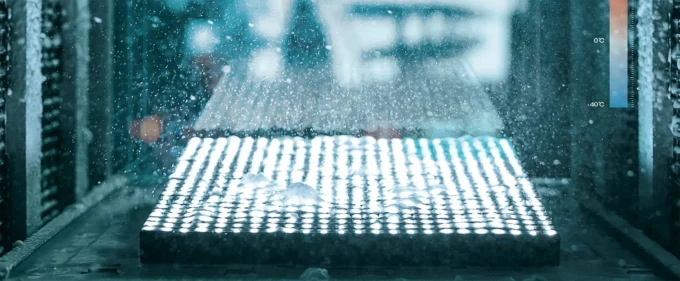The displays used in outdoor spaces grab the attention of people passing near them. The outdoor digital displays are the perfect choice to get the spotlight whether it is for personal or business purposes. Do you want to know how to design displays for outdoor use? In that case, have a look at the below tips.
How To Design Displays For Outdoor Use
We have below listed the best tips in order to design displays for outdoor use.
Protection against weather

Source: ledscreenpanels.com
The display can get damaged and in worst cases, stop working totally if water penetrates through the LED enclosure. It is better to construct a closed-loop air circulation system that will separate the display enclosure from water and pollutant infiltration, lessening the chance of water damage.
The water-resistance and safety against solid object contact are assessed by the ingress protection (IP) grade. It also demonstrates how to protect the display from several weather circumstances. In order to safeguard against moisture and solid items, get screens with a high IP rating.
The features your personalized outdoor display would need are primarily influenced by the weather and climate circumstances. Here are some of them:
- Readability in the sun
- Waterproof
- Dustproof
- Protection from the heat
- Protection from the cold
Utilize bold and non-serif fonts
It is best to use typefaces that are large and easy to read. Thin lines appear to fade or break apart at 500 feet. Make sure to avoid using fonts such as decorative, serif, and italic. The sans serif fonts in upper and lowercase provide the best readability.
When designing for digital outdoor, it is better to use a thin black line around the text to differentiate it from the background. Make use of understandable fonts. Select fonts that can be read from a distance. It can be hard to read fonts that are exceedingly thick, thin, or ornamental.
Select the best hardware

Source: neoti.com
If you reside in a seasonal area or your location suffers from dramatic temperature variations, select a display that is appropriate for the climate. When you pick an LED screen that is fully outdoor-rated, you can be sure that it will not get damaged by direct sun, rain, or snow and that it will display the subject even if it is cold or hot. You can check out plus-display.co.uk to acquire different types of best promotional displays.
Touch sensors
Touch sensors are almost a need for any modern outdoor digital display. Capacitive touch sensor technology enables you to launch a variety of digital screens in several environments without fear of damaging the displays’ internal systems.
Furthermore, despite being exposed to elements, such as rain, wind, ice, snow, and sleet, these types of outdoor displays can be controlled manually or remotely. The heavy cover-glass protects all the electronic parts and mechanisms. In addition, it is held in place by optical bonding to avoid leakage and authorize touch operations.
Regulate internal temperature
In order to work correctly, outdoor LED screens need a comfortable interior temperature. As they are always on, you may have to take precautions to prevent overheating issues like mismatched colors, dead pixels, and fading images. In order to guard against this danger, the outdoor screen needs to be equipped with an HVAC system that can control its internal temperature.
It should have a cover glass finish.

Source: starfishsigns.com
As the digital displays are intended for public usage, the cover-glass finish is one of the most significant qualities to look for. The purpose of the cover-glass is to safeguard the display’s internal mechanisms from exterior harm such as breaking.
Outdoor displays should be designed to resist harsh weather circumstances and constant use. A durable cover-glass coating should be able to endure practically anything, including bad weather, vandalism, and rough use.
Check the brightness
One of the most vital parts of captivating passersby’s attention is the brightness of the outside display. The outdoor screen must be visible due to the brightness of the direct sun. It is better to pick screens with high brightness, high-contrast as they enhance the appeal of your material.
Unless a display retains a brightness rating of 2,000 nits, it can not be seen in direct sunlight. If the screen isn’t that bright, it is better to move the screen beneath a net or a tent to protect it from the sun.
Select the best location
When it comes to drawing a more target audience to the content, the location of the display is crucial. It is also critical to maintain the outdoor display screen’s overall long-term condition. It is good to install outdoor screens in a location not exposed to direct sunlight, such as under a tent or on the west side of a structure.
Vandalism can be another factor to be worried about if the LED screens are located in an urban or heavy traffic region. As of now, a few outdoor LEDs are available with vandal-resistant glass, which can help protect them from damage.
Regulating screen health

Source: yahamled.com
A decent outdoor display needs to include remote monitoring so you can keep an eye on it from afar. Using the remote controlling alerts, it is possible to take instant action to rectify any problems that might create more issues later. In addition to that, you can see what is displayed on the screen, update it as needed, control the general temperature and performance of the screen.
Warranty
As of now, even the most cutting-edge electronic displays are only designed to work for a specific number of years. After that, replacement of the components and constant repairs may start to arise where it is more cost-effective to get a new outdoor display. Display technology is a huge undertaking and investment. As a result, it is critical to check the warranty and its terms and conditions.
Bottom Line
Make sure to follow the above-listed tips and rules in order to design displays for outdoor use. The above tricks will help you make a beautiful promotional display and also ensure the safety of the display.







